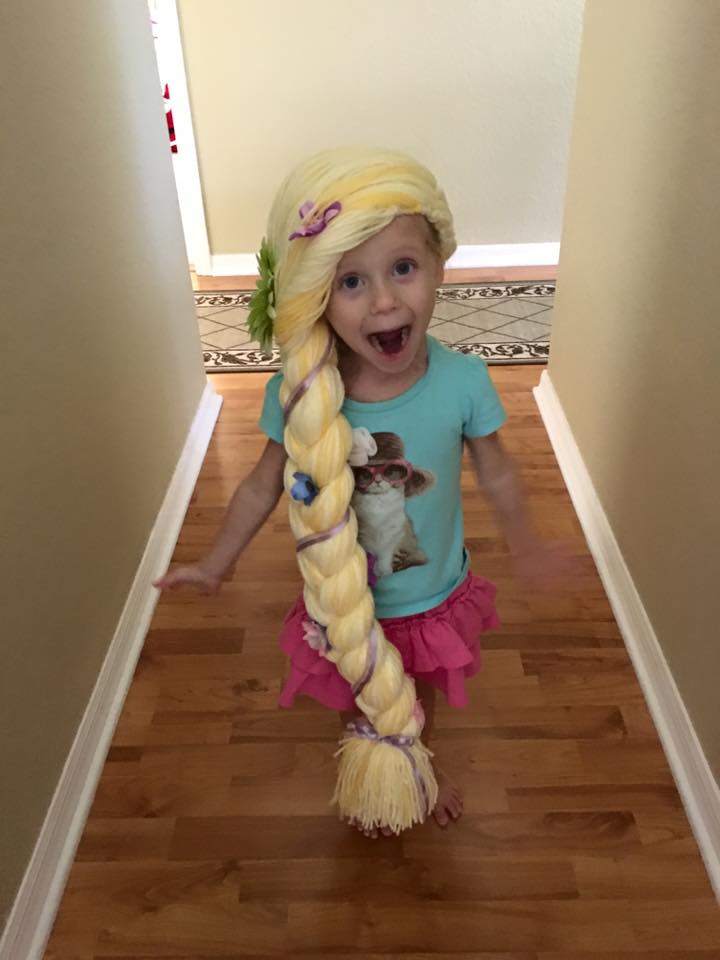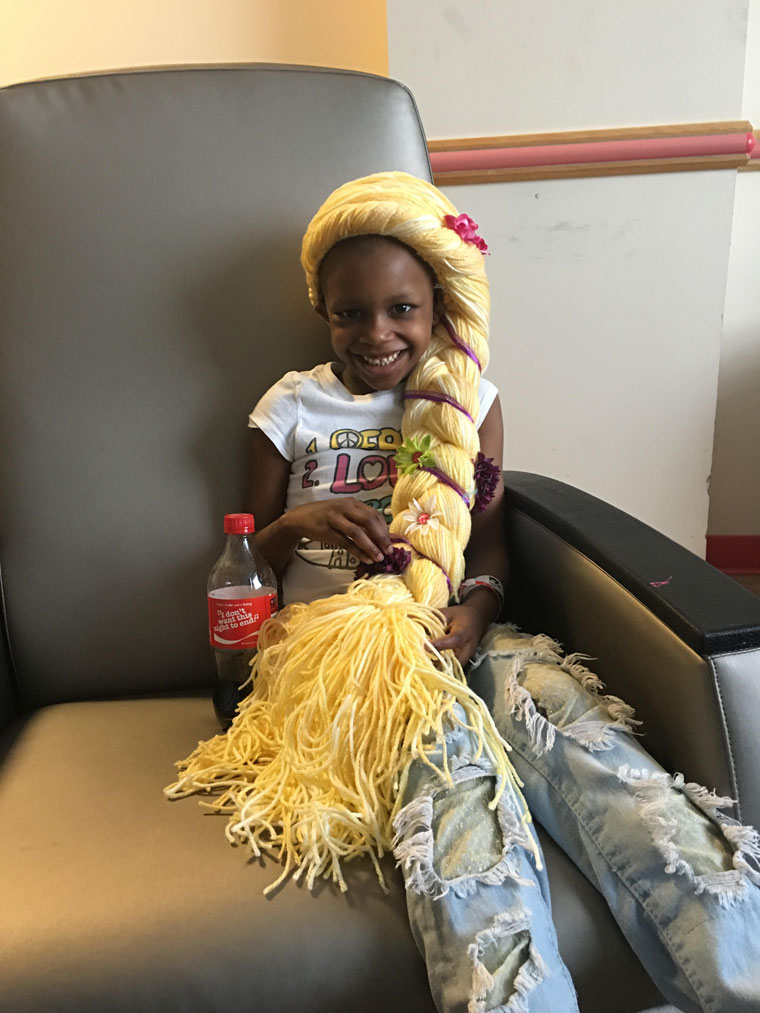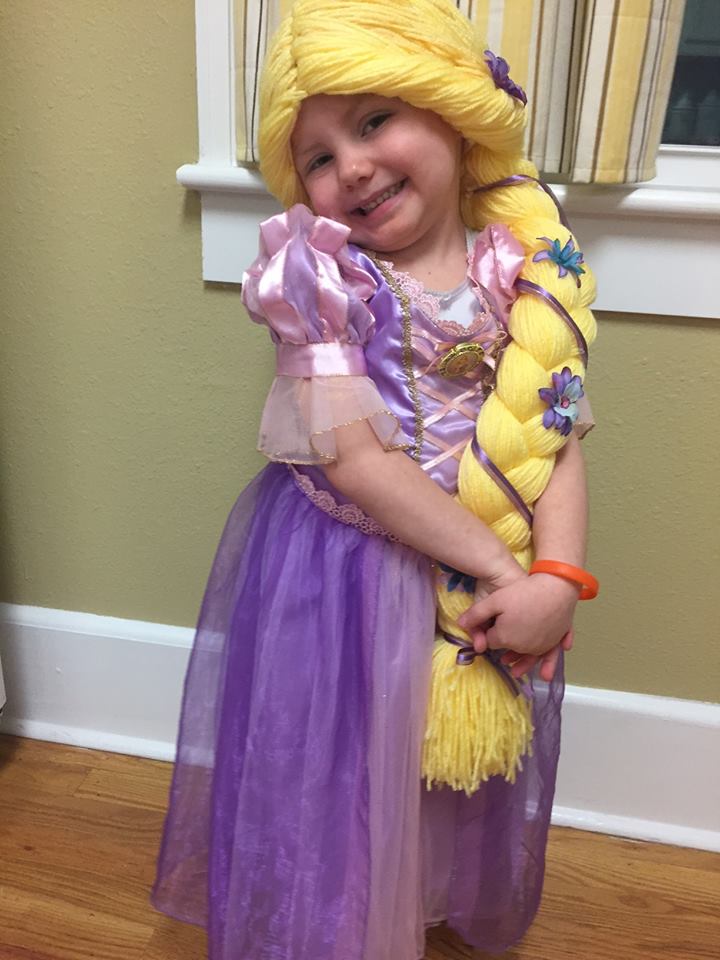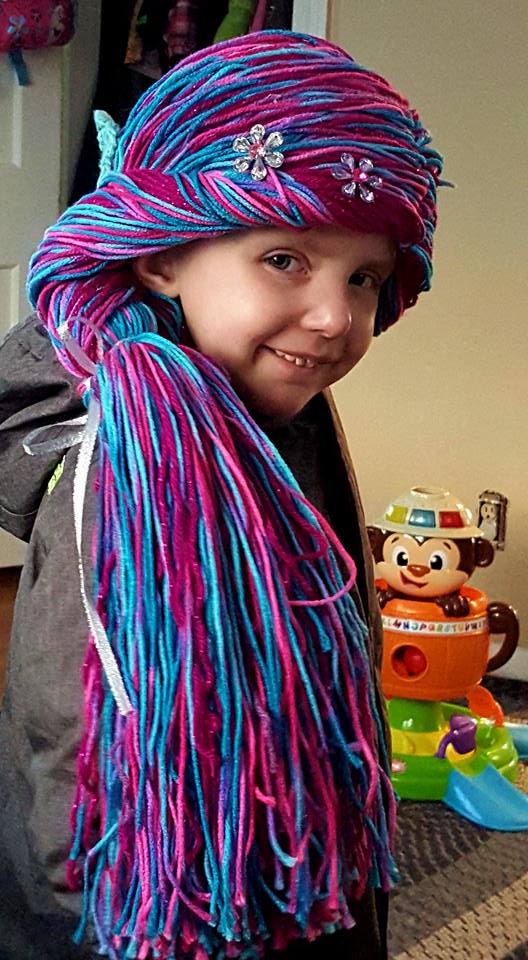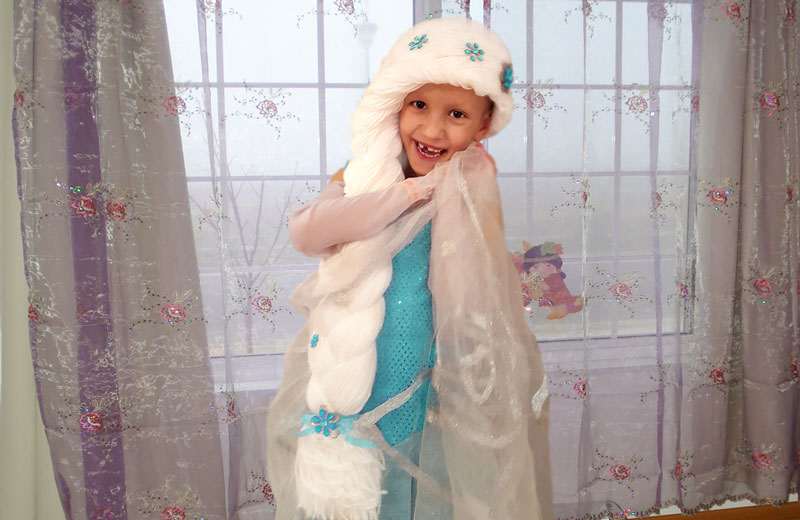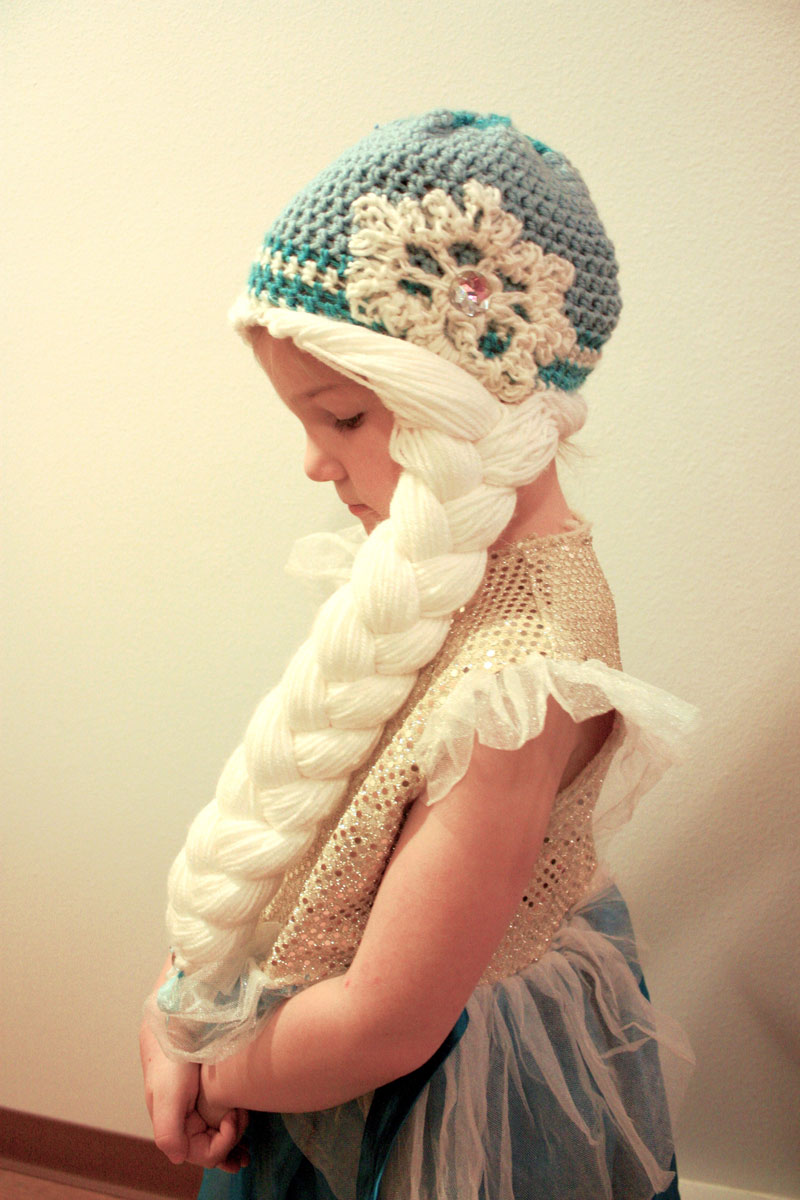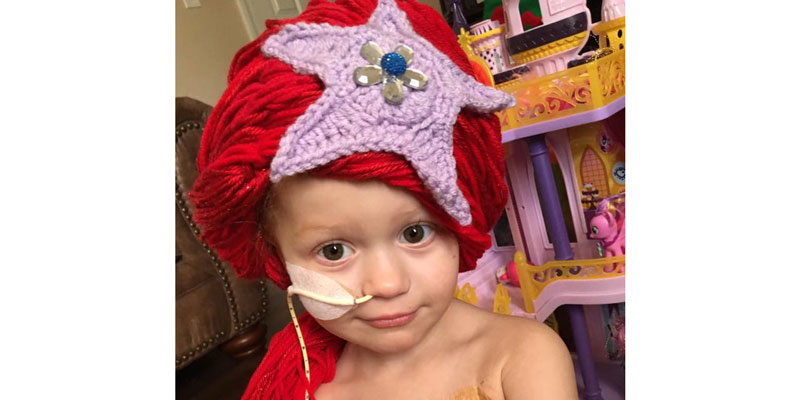If she had a magic wand, BYU nursing alum Holly Willardson Christensen (BS ’06) would wipe out cancer. Short of that kind of magic, though, she has whipped up her own brand of bippity-boppity-boo to help kids battling cancer smile again.
Through her nonprofit, the Magic Yarn Project, Christensen gifts whimsical princess and pirate wigs to girls and boys who lose their hair during chemotherapy treatments.
Less than a year since Christensen made her first yarn wig in her Palmer, Alaska, apartment, the project has garnered national media attention, built a community of contributors that spans the globe, and sent some 700 wigs to individual kids and cancer centers in 14 countries.
“A wig does not save lives or help these kids get treatment,” says Christensen. “But it allows them to be kids again. . . . It can give them a magical escape.”
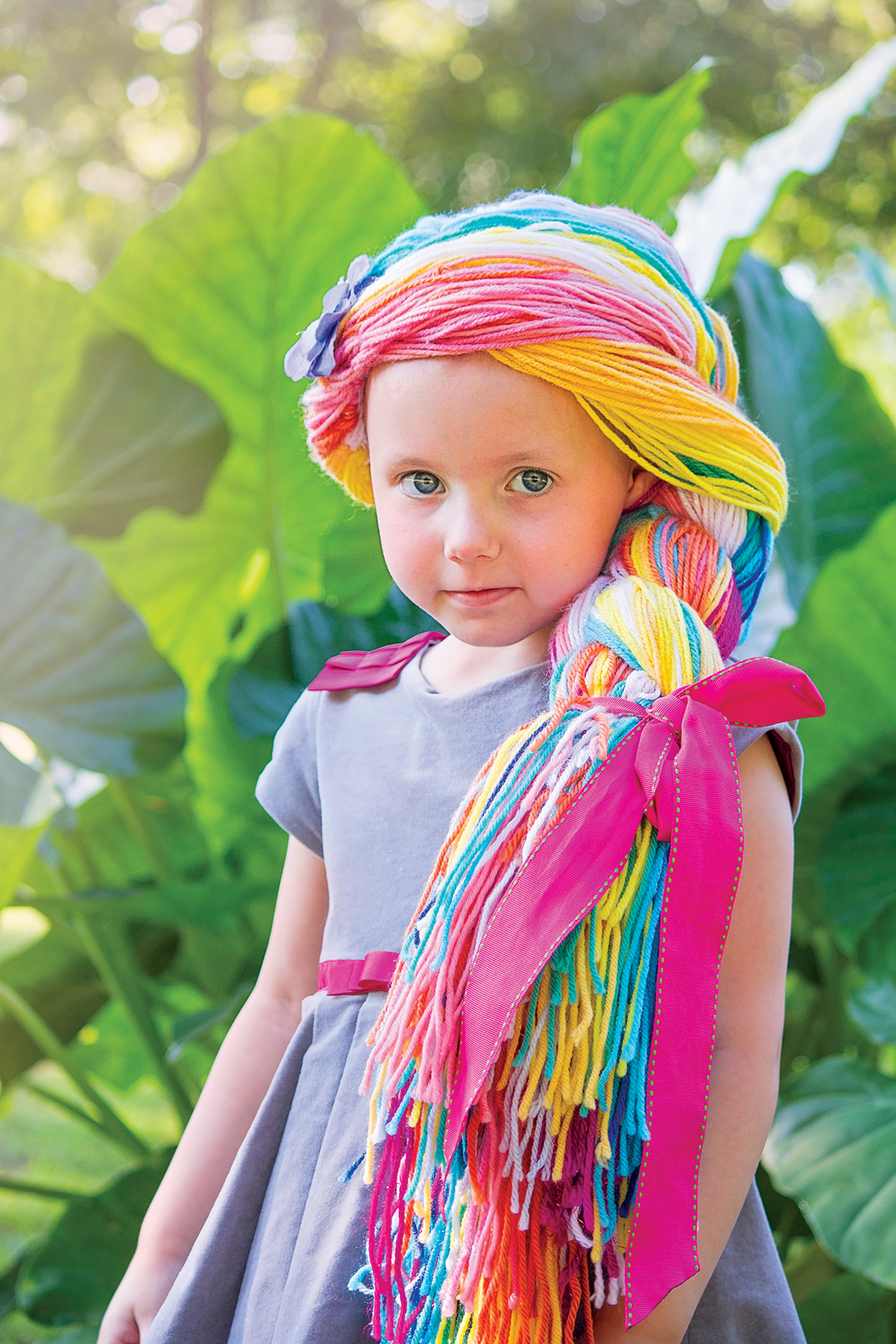
She sees evidence of that in happy, smile-filled snapshots of recipients wearing one of seven styles—Rapunzel and Elsa the clear favorites.
Her photo album includes pictures of the little girl who started it all.
It began when Christensen, a mother of three, learned that the daughter of her former BYU nursing classmate Rachel Gammon Mecham (BS ’06) had lymphoma cancer.
“I’ve worked in oncology,” says Christensen (and not just anywhere: at Houston’s MD Anderson Cancer Center, the nation’s preeminent hospital for cancer treatment). “I’ve seen the worst of the worst. And I’ve been drawn to people suffering in that way ever since.”
Christensen didn’t know what she, in Alaska, could do for the Mechams, in St. Louis. She offered all the insights and information she could. “And then I looked over and saw my girls’ Halloween wigs on the floor,” she recalls. “It was like an inspired idea, a prompting from the Spirit.”
The same way she made the costume wigs, Christensen took a soft crocheted beanie, threaded in baby-blanket-soft yarn to fashion a long blond braid, and sent it off.
The wig arrived shortly after the Mechams learned their daughter had relapsed—the cancer was back.
“Our daughter put it right on,” recalls Mecham. “She wanted to put on one of her princess dresses with it. And she went outside in the grass to twirl.” After seeing her daughter spend 80 nights in the hospital over seven months, this sight was a boost, Mecham says, to herself as a parent as much as it was to her daughter.
The little girl who started it all (unnamed at her mother’s request). When she received her wig, she put it on, along with a princess dress, and went outside to twirl. “I know there are angels seen and unseen watching over us in our trials,” writes her mother, Rachel Mecham. “Holly is providing tender mercies for so many others like my daughter.” Photo courtesy of the Magic Yarn Project.
“There were points when we thought she was going to die,” says Mecham. “We were uplifted and sustained by tender mercies sent to us by Heavenly Father. The wig from Holly was one of those many tender mercies.”
Thanking Christensen, Mecham added, “I bet a lot of little girls at our hospital would love that.” And the seed was planted.
The local hospital, Christensen thought, might want a few wigs. As a member of her ward Relief Society presidency, she put together a wig-making activity with her ward sisters, putting out a public call for yarn donations on Facebook.
The post went viral.
Hundreds of requests for wigs poured in, as did offers to donate money, supplies, and time. The last eight months have been a frenzy of community workshops—most held in LDS chapels. Christensen put up online tutorials for knitters to contribute remotely, as far off as Australia and Scotland. She even enlisted a crocheting group at the local women’s prison.

According to Karla Hicks, the social worker who oversees this group at the Hiland Mountain Correctional Center, the inmates “seek to participate in the project”—they work their way up to the elite group of crocheters. “While the ladies are working, you can hear laughter, singing,” she continues. “There is no time for them to feel sorry for themselves because of the poor choices they made in the past. They are working on a gift for a child who didn’t choose to have cancer or to to loose their hair.” The female inmates say it’s been a source of motivation and purpose, says Christensen, who is headed back to the prison this week to teach them how to make the new Jack Sparrow wigs.
Christensen will take all the help she can get. A wig runs $20—more to ship. And she’s besieged with requests. And yarn. “Our garage has become the Magic Yarn warehouse,” she says—it’s walled in by colorful skeins. They park the cars outside (never mind 20-below Alaskan-winter lows).
“I sometimes have mommy guilt,” says Christensen, who volunteers 40-hour weeks to the Magic Yarn Project on top of working part-time as a nurse. So she tries to incorporate her children in the effort, grateful for moments like when her oldest, 7, whispers to her siblings during prayers, “Don’t forget to bless the girls with cancer.”

The project has been covered by Upworthy, ABC News, Huffington Post, Oprah’s O magazine—the list goes on. And it was recently honored at the One Hundred Gala, a cancer-research fundraising event hosted by Massachusetts General Cancer Center.
“It’s just wonderful to have the community support kids in this way,” says Janel Wohlers, the in-kind gift coordinator at Seattle Children’s Hospital—where Magic Yarn wigs have been a big hit. Unique items, like these wigs, she says, strike chords normal toys don’t. “One little girl who had lost her hair got the wig and was just beaming,” says Wohler. “It’s pretty neat to see that kind of reaction. You just never know how an item for a child, at a particular moment, might just mean everything.”
Find more information, tutorials, and details on how to help at themagicyarnproject.com.







